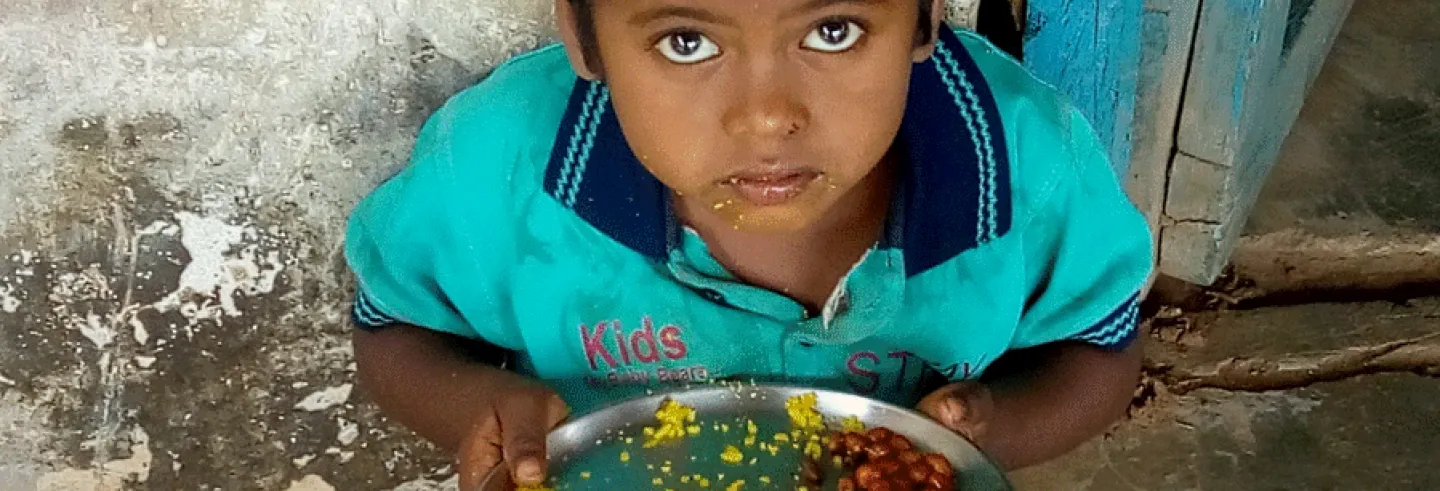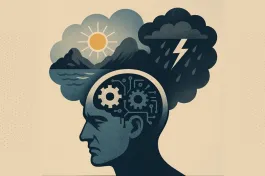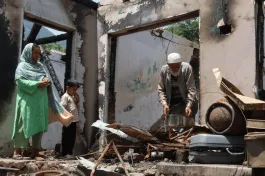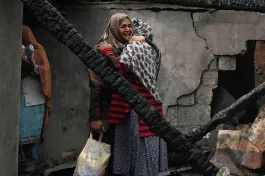Last December the results of the National Family Health Survey (NFHS) from 2019-20 hit the headlines. And the news was not good. In a world where children mattered, the logical outcome would have been for the government to course correct in the budget to be presented two months later. Instead, in the Union Budget for 2021-22, essential and time-bound services for mothers and children are being further starved of funds.
The NFHS is a source of valuable information on a variety of indicators of people’s wellbeing – from health and nutrition indicators to experience of domestic violence and the reach of essential public services.
Between NFHS-2 (1998-9) and NHFS-3 (2005-6), key indicators of children nutrition (the proportion who are underweight and stunted for their age) did not show much improvement. Facing flak for those results, the reaction of the then (United Progressive Alliance-2) government was to scuttle the next round of the survey. Owing to continuing pressure, NFHS-4 was finally conducted in 2015-16. For 10 years, on key indicators related to people’s wellbeing India did not have any reliable and nationally representative surveys.
[W]hile living standards show an improvement [in the NFHS data], as far as key outcome indicators such as child nutrition, anaemia and mortality are concerned, the results are sobering
The results of NFHS-4 showed substantial improvement. Using the Multi-dimensional poverty index (MPI), the Oxford Poverty and Human Development Initiative found that poverty had halved between NFHS-3 (2005-06) and NFHS-4 (2015-16). This was likely the result of the grudging commitment, in part due to public pressure, to women and children’s programmes during the UPA years (2004-2014).
Unfortunately, the partial results from the latest round of the NFHS-5 (2019-20) suggest that the steady improvement seen in the previous decade, may not have been sustained. As before, while living standards show an improvement, as far as key outcome indicators such as child nutrition, anaemia and mortality are concerned, the results are sobering. For instance, between NFHS-4 (2015-16) and NFHS-5 (2019-20), there is no change in the proportion of underweight and stunted children (34% and 36% respectively) in the ten states for which data are available.

Why, in spite of healthy economic growth, do we see so little progress on these indicators? It is the niggardly and stagnant public spending on women and children that lies at the heart of the problem. The problem is exacerbated by misplaced spending priorities of those meagre resources (corporate funding might enhance availability of resources, but what is that money spent on?) and the hurdles created by flow of funds issues and paperwork in accessing budgets.
Data for states where under-nutrition was concentrated such as Uttar Pradesh, Madhya Pradesh, Rajasthan have not been released. An overall assessment will have to wait, but the accompanying graphic, which juxtaposes Bihar with Gujarat, provides a glimpse of where we are.
Out of the 127 indicators where the outcomes can be classified as better or worse, Gujarat fared better than Bihar on 81. For instance, public health services are better in Gujarat: three out of four women received four ante-natal check-ups, near-universal institutional deliveries and lower mortality rates.

Yet on key outcome indicators—the proportion of stunted or anaemic children, full immunization rates, women with low BMI and so on—Gujarat and Bihar are indistinguishable. On some indicators of women’s status, Bihar does better: more women in Bihar enjoy property rights, use a mobile phone themselves, etc. Ditto with the proportion of anaemic children under-five children. This is the next generation, an indication of things to come.
Bihar has long had among the worst development indicators. This comparison between Bihar and Gujarat shows that whatever else it might be a model state for, Gujarat is not a model for well-being among women and children.
What is going on?
Low public spending is certainly part of the problem. Take two important schemes for women and children: the Integrated Child Development Services (ICDS) Scheme and the Pradhan Mantri Matru Vandana Yojana (PMMVY). Both are part of the National Food Security Act 2013 and have suffered from neglect in different ways in the past six years.
The PMMVY is a cash transfer to pregnant and lactating women. It is supposed to be the equivalent of the Maternity Benefits Act for women in the unorganized sector. Until 2017, a pre-existing scheme, the Indira Gandhi Matru Sahayog Yojana was running in 50-odd districts. The PMMVY was instituted in 2017, in diluted form. One, it restricted the cash benefit to the first child and, two, instead of Rs. 6,000, women now get only Rs. 5,000. Remember, women in the organized sector are entitled to six months wage compensation as maternity benefits, whereas for women in the unorganized sector, the law provides a fixed amount (Rs. 6,000). It is not pegged to the minimum wage nor is it indexed to inflation. The allocations made since 2017 are one-fifth of what are required to achieve universal coverage, as required by the law. Moreover, findings from our survey in six states indicate the paperwork is so cumbersome that many do not get their benefits. In the year of the pandemic, when women’s needs must have been even greater, the Union Budget reports that in 2020-21 only Rs. 1300 crores (of the total allocation of Rs. 2500 crores) was utilized.
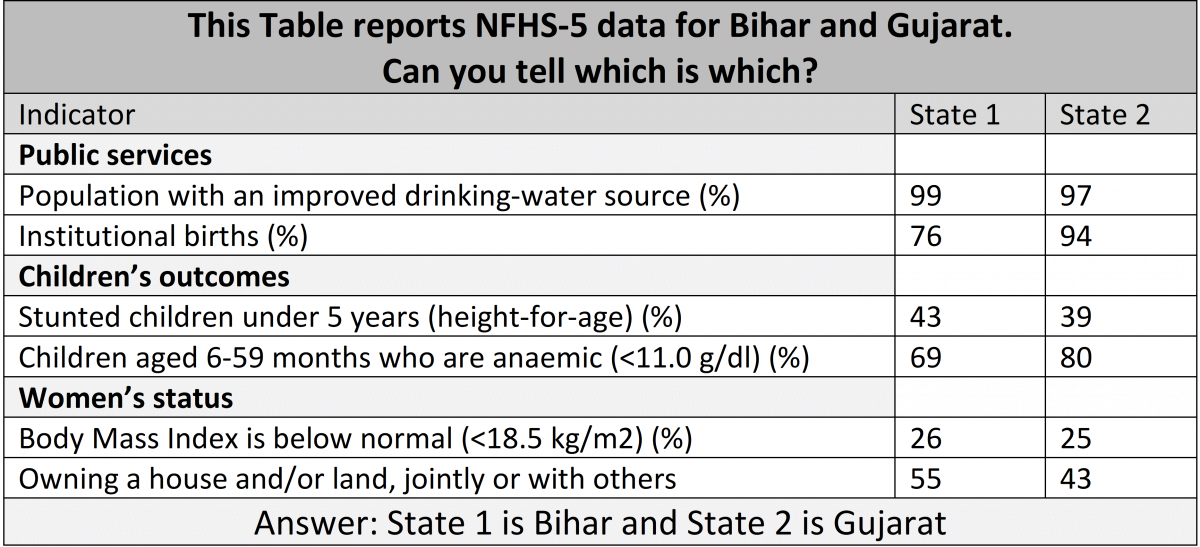
In the case of ICDS too there is such under-spending, and in spite of clubbing it with other schemes, in nominal terms, the allocation in the budget for 2021-22 is lower than in 2020-21. In fact, according to calculations by Jean Drèze, in real terms, the budgets for the Mid-Day Meal scheme (for school going children) and ICDS are lower by 36-38% today than in 2014-15.
Similarly, the central government’s allocation for the ICDS scheme has stagnated in the past six years in nominal terms. As a percentage of GDP, it declined marginally (0.15% to 0.10%) in this period. The overall expenditure is higher because the 14th Finance Commission increased the state’s contribution to programmes such as ICDS. We know that the states continue to be stressed for resources denied their legitimate shares by the centre, either because of delayed releases of their share in GST collections or by the growing use of non-shareable cesses by the centre (a trend that has continued in the Union Budget for 2021-22 with the imposition of a new agricultural cess). Thus, while states’ obligations have increased, their funds have dried up.
What are we spending on?
Another worrying development is the potential capture of the meagre social spending by corporates and philanthro-capitalists. This is best illustrated by the central government’s flagship nutrition programme called “Prime Minister’s Overarching Scheme for Holistic Nutrition” (Poshan Abhiyan), launched in March 2018.
In theory, the Poshan Abhiyan includes some useful interventions, such as public awareness, education, and behavioural change. There is no doubt that we need to do much more about nutrition education. Poshan Abhiyan could help achieve this. For instance, six months of exclusive breastfeeding is strongly recommended for optimal growth, development, and health. It is something for which the government can only educate and encourage behavioural change. Yet, between 2015-16 and 2019-20, only one of the 10 major states has made significant progress in the extent of breastfeeding: in Maharashtra, the proportion of children exclusively breastfed for six months increased from 57% to 71%, the highest among the ten major states for which NFHS-5 data is available. In others, between half and two-thirds of children were exclusively breastfed for six months.
On the ground, Poshan Abhiyan is primarily about giving smartphones to anganwadi workers and ICDS-CAS (Common Application Software) installed on them. Have these smartphones helped or hindered their work? Has it facilitated more reliable real time monitoring? For instance, on its launch in Gujarat, ICDS-CAS made it to the frontpage of a Gujarati newspaper: the Chief Minister tried calling a handful of numbers, and none of them answered on the first attempt. Anganwadi workers were projected as being negligent in their duties. No one bothered to find out if they had not answered because they were busy with their duties, or due to phone malfunction, or if they were indeed snoozing, as implied.
Some ground reports suggest that for months in 2020 the phones and tablets were not used for record-keeping because of server and internet issues. Centralized software design means that it does not serve the needs of all states.

We don’t know much about the usefulness of the intervention. Since 2011 the Bill and Melinda Gates Foundation (BMGF) has funded an IFPRI project acronymed Poshan: “Partnerships and Opportunities to Strengthen and Harmonize Actions for Nutrition”. (Odd coincidence about the shared acronym for the government’s programme and the IFPRI-BMGF project.) The project page states that “Prominent studies we are undertaking include an evaluation of ICDS-CAS (Integrated Child Development Services - Common Application Software) in Madhya Pradesh and Bihar.” However, their publications seem to rely, quite sensibly, on NFHS data far more than they do on real-time data from ICDS-CAS. The latter are barely used, if at all.
What is clear is that the nutrition agenda is increasingly driven by international agencies such as BMGF, UNICEF, IFPRI and others. UNICEF now raises funding from corporates and philanthro-capitalists. In India, it partners with Johnson and Johnson, Unilever, Louis Vuitton, CII and NASSCOM among others. While corporates and philanthro-capitalists might enhance fund availability, they also use it to further their own agendas. In fact, UNICEF’s “Impact4Nutrition” platform openly invites private sector participation in the Poshan Abhiyan because “Good Nutrition is Good for Business”. Among the “Direct Gains for companies” listed there are recognition as “nutrition champion”, “enhanced relations with government” and “economic growth”.
What was earlier shunned as conflict of interest has today reinvented itself as a ‘win-win’ formula. There is evidence of this in the Poshan Abhiyan too. More than 70% of its budget was spent on community events and Information and Communication Technology (ICT)-enabled real time monitoring through the ICDS-CAS software developed in collaboration with BMGF.
In December 2017, Rs. 9,000 crore was allocated for the ICDS-CAS, half from the Indian government and the other half as a World Bank loan. This could have been spent on interventions whose health and nutrition benefits are well established: giving nutritious food to children, hiring more ICDS staff (vacancies range from 6-8% at the anganwadi to 25% among CDPOs), paying better salaries or providing cash support to pregnant and lactating women. Instead, it has been spent on interventions whose benefits are unclear: smartphones, software, and organizing large conferences during “Poshan maah” in cities for ‘behavioural change’. This Rs. 9,000 crore could buy 150 eggs a year for the roughly 10 crore children enrolled in anganwadis.
Difficulties in using funds
Not all government spending is channelled to questionable ends, of course. Cash transfers to women under PMMVY are deeply appreciated by them and can provide relief at a time to immense financial difficulties (e.g., especially for those women who experience complications during their pregnancy or delivery). Similarly, the ICDS budget pays the salaries of anganwadi workers or in many states, for the provision of eggs and other nutritious food to children.

The flow of funds, however, is not smooth and leads to grievous delays and disruptions in these essential services. Take, for instance, anganwadi workers and helpers. This team of two helps little children get used to sitting, eating by themselves, and being without their mothers for a few hours. In an increasing number of states they engage children in learning-by-playing activities such as rhymes, art and craft, counting, etc (See the video below for an idea on how in some states the anganwadis function well, but not so in others).
The salaries of the anganwadi workers tend to be low, and worse, they are often not paid on time. Over the past few months, anganwadi workers and helpers, along with ASHAs have been agitating in different states for better and timely pay. A disruption in the flow of funds also means that cash for buying the food supplies (such as dal, oil, eggs, etc.) may be unavailable. Instances of anganwadi workers advancing money to ensure regular food to children are not unheard of.
Both centre and states are responsible for these issues. The bottom line is that a poorly and irregularly paid workforce can hardly be expected to function effectively.
Need for urgent action
Starting in the mother’s womb, the first 1,000 days of a child’s life provide a window of opportunity to improve their nutrition and health outcomes. Those are closely linked to better education, earnings, and health outcomes in later life. The PMMVY and ICDS are crucial interventions at this stage. On top of the general neglect of these programmes, for most of 2020, anganwadis remained closed. The recently released NFHS-5 data pre-dates the disruption caused by the pandemic. This affected a range of time-sensitive services delivered by anganwadis: registration of pregnancies, immunization, nutrition, cash benefits to pregnant women.
It is a telling comment on our priorities that malls and cinema halls were given permission to reopen before anganwadis...
Each day of delay in reopening anganwadis means that someone is skipping the registration of her pregnancy or vaccination or a referral. Getting ICDS services running immediately should be top priority, along with resumption of school meals. It is a telling comment on our priorities that malls and cinema halls were given permission to reopen before anganwadis, and even after they have been given permission to reopen, they remain closed in many parts of the country.
This is a revised version of an article that was published in Mint as “How Hunger Came Back to Haunt India” (23 December 2020)


